Threadripper cooling: low profile server air coolers and Thermal Grizzly thermal pad
There are big tower air and water AiO coolers for Threadripper CPUs. There are also Epyc/Threadripper low profile server coolers. To top things off we also got Thermal Grizzly Carbonaut thermal pads that can come in TR4 size. Let's check those options and their cooling performance.
Dynatron A26
Dynatron A26 is a 2U Threadripper/Epyc cooler that is only 119 x 79 x 65 mm in size and has a side blower. It fits within TR4 socket size so it won't conflict with any RAM sticks you may have. Prices start from around 34 EUR in Europe.
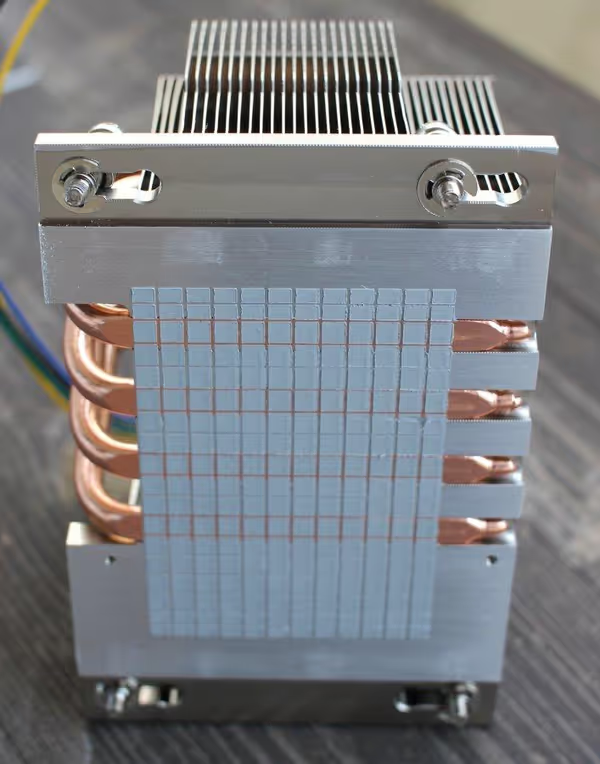
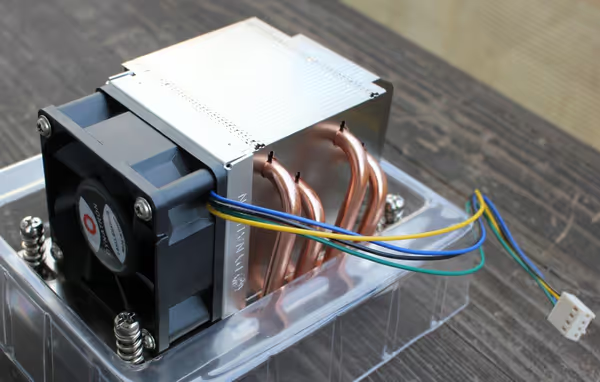
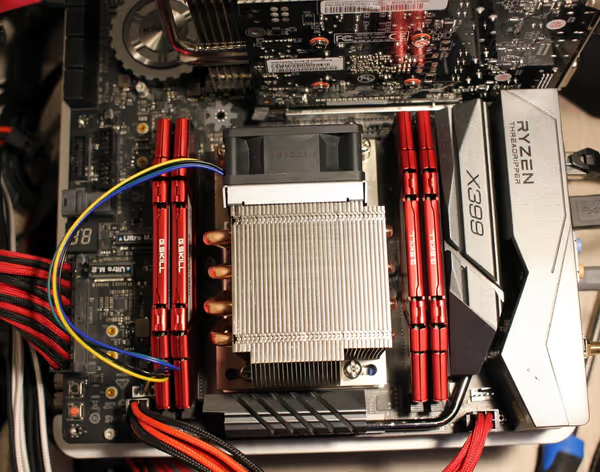
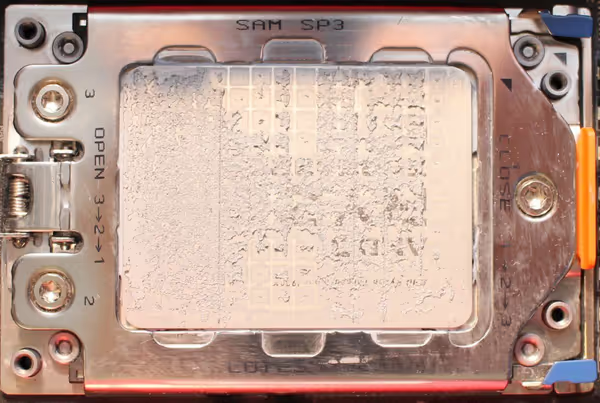
Dynatron A31
Dynatron A31 is a small 1U Threadripper/Epyc cooler that is even smaller - 120 x 82 x 27.5 mm in size and can handle processors up to 180W of TDP. Prices start at 43 EUR.
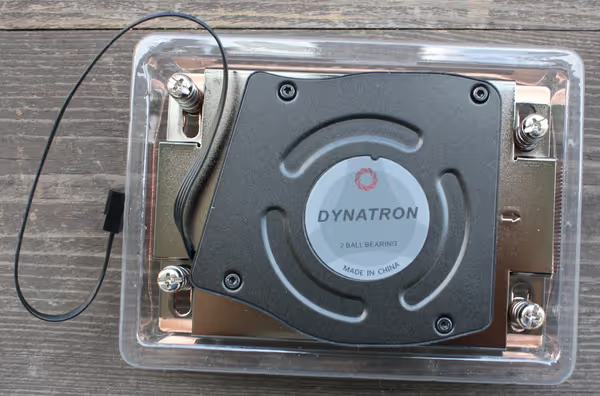
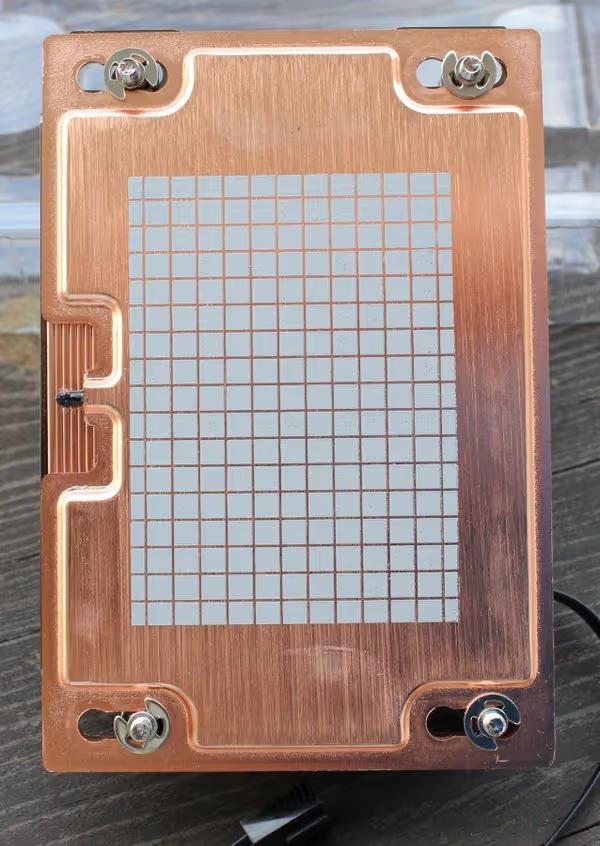
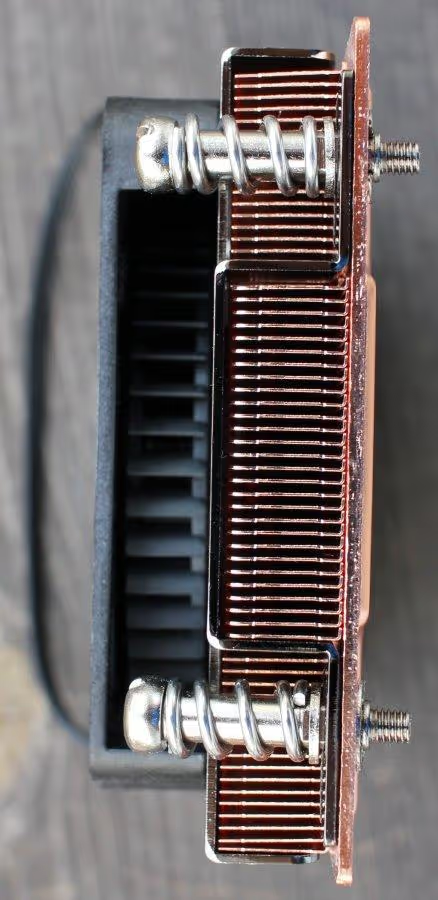
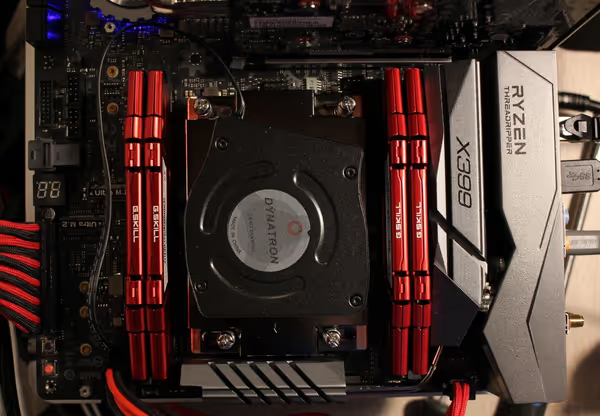

Cooling performance and noise levels
For the test I used Threadripper 1920X on a ASRock X399M Taichi mATX board powered by Chieftec Proton 1000W PSU (very quiet during the test) and passively cooled GTX 1050 Ti KalmX (no extra noise) on an open test bench in a ventilated room. Server coolers often are expected to work in conjunction with a server cooling system (high airflow case) so this test won't give their performance in a server environment but more like a worst case scenario when used in a consumer system.
The CPU fan curve was set to standard and should follow the CPU temperature - although the fans did not ramp to max RPM with such settings under full load. Like Dynatron A31 stayed at 6000 RPM and did not ramp up to 9000 RPM which it does when the fan speed is set to fixed max in the BIOS. For Dynatron coolers stock thermal paste was used. Noctua used Thermal Grizzly Kryonaut.
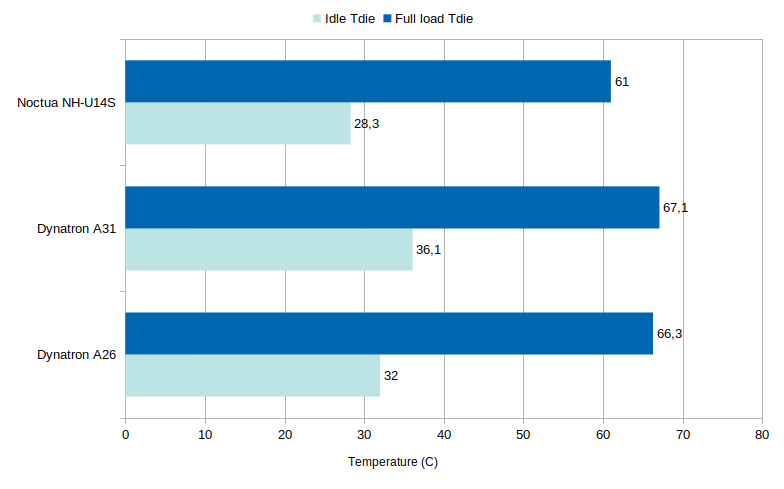
So it looks like big Noctua cooler is only slightly better than the 2U Dynatron A26 cooler. Small A31 has the highest temperatures as it could be expected. This however doesn't show the actual story. For that we have to check the core frequencies:
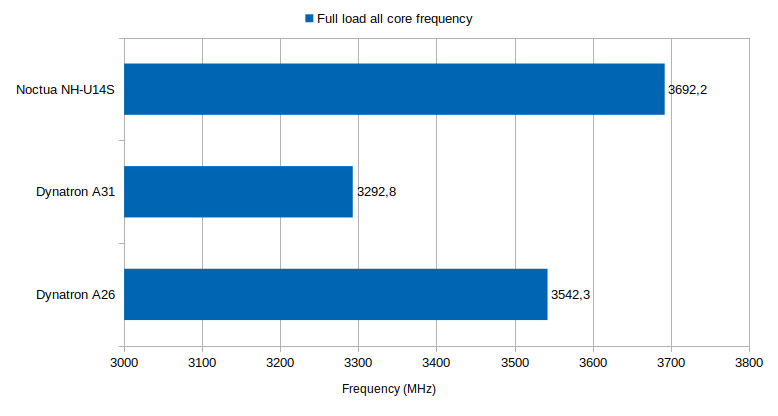
So with frequencies we see the actual effectiveness of the coolers. The server coolers did throttle under all core load leading to lower clocks. A26 reaches 96% of Noctua clocks and A31 only 89%. Threadripper 1920X under full load on all cores can reach 3700 MHz as base
(no OC and alike) if the thermals allow it.
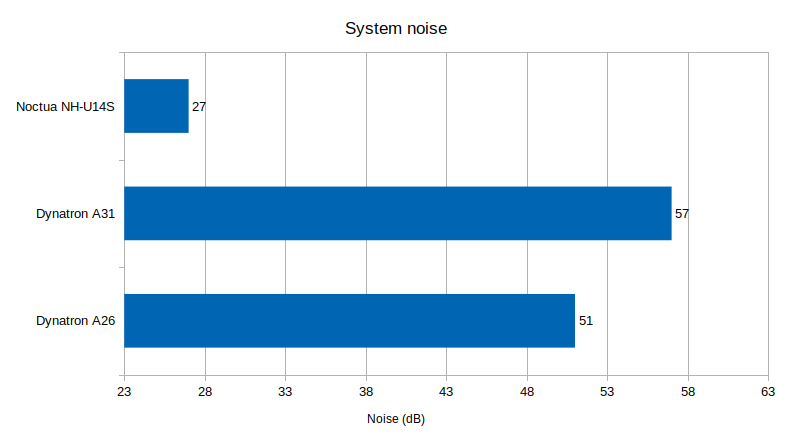
The server coolers are loud as server parts tend to be. The airflow is high and you can feel the flow of the air coming through a small cooler. If you would use one of them then working next to the PC could be quite annoying as 57dB is really loud. Noise level with PC turned off was 23dB.
Both Dynatron coolers did not ramp up to max RPM under full load in this system. For small A31 that would cause a jump from 6000 RPM to 9000 RPM making it even louder. Building a normal Threadripper PC you should use an AiO or standard tower coolers. Such server coolers can be handy as a backup when AiO fails and you can't drop a tower cooler due to RAM or case position conflict or when you are making a HTPC that has to fit in a rack case as a 1U or 2U case.
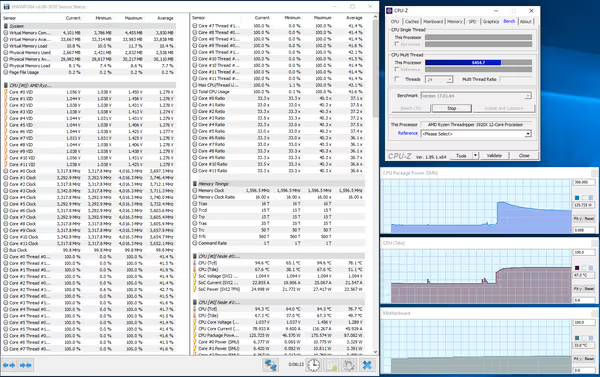
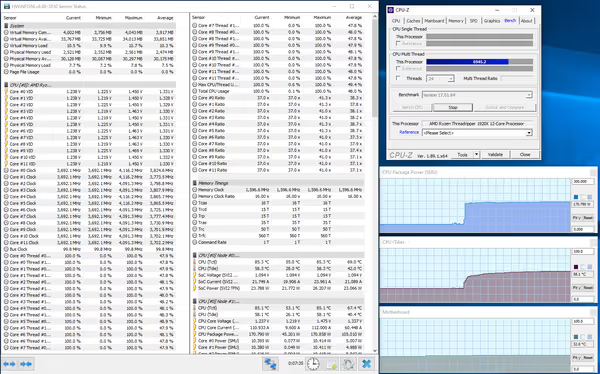
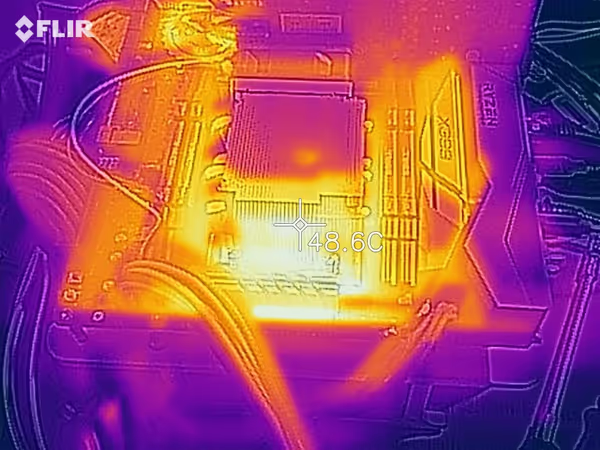
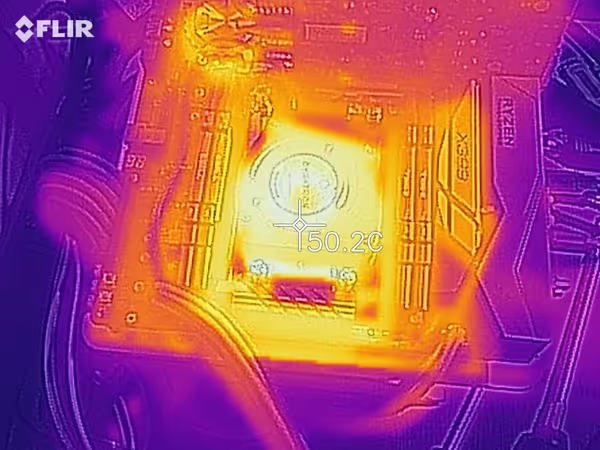

Thermal Grizzly Carbonaut thermal pad
Thermal Grizzly Carbonaut thermal pad is a sheet of a carbon pad that you just put on the CPU IHS like if it was a sheet of thin paper. It's durable and reusable (no changes to the shape and structure after few coolers swaps) and compared to thermal paste makes the application
quite easy (you don't have to asses the proper amount and how to put it on a big Threadripper IHS).
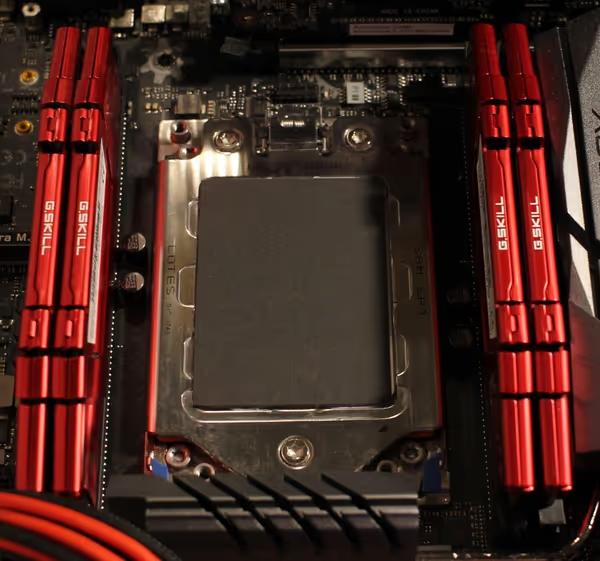
Noctua NH-U14S with Kryonaut and Carbonaut thermal pad gave similar results. The frequencies under full load were the same while Tdie was 2 degrees lower for the carbon pad. To test the pad even more I used Noctua cooler with fan set to max RPM. One test with Arctic Silver Ceramique 2 and one with thermal pad.
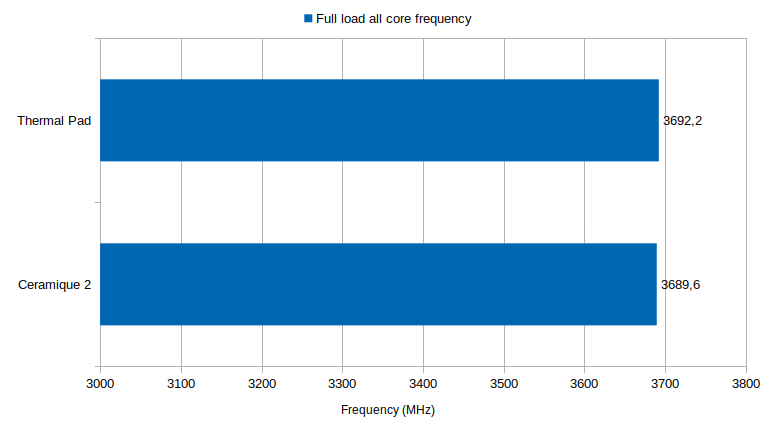
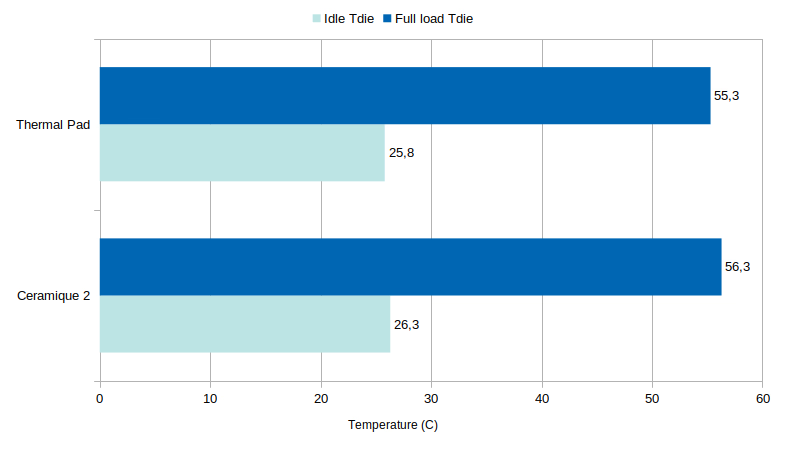
So the thermal pad is pretty much identical to a pretty good thermal paste. If you want to test different coolers without the paste application variable then such pad is a cool option. If you want a clean application then it's also an interesting product and I'm gonna keep it with my 1920X.
I've also tested the thermal pad with Dynatron A31 mini cooler instead of it stock thermal paste to check how that would perform and if Dynatron stock paste would be really bad. The full load Tdie temperatures were pretty much identical but with the thermal pad more cores managed to pull 3317,8 MHz instead of 3292,8 MHz.
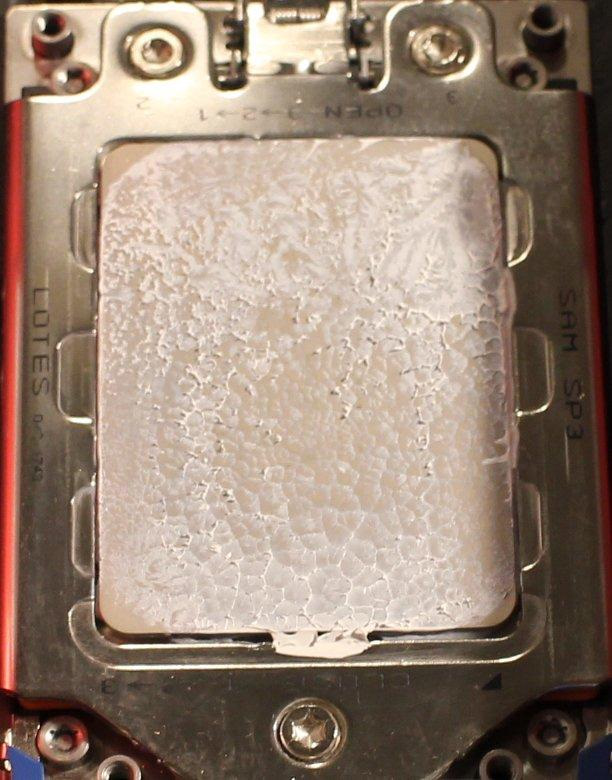
Comment article